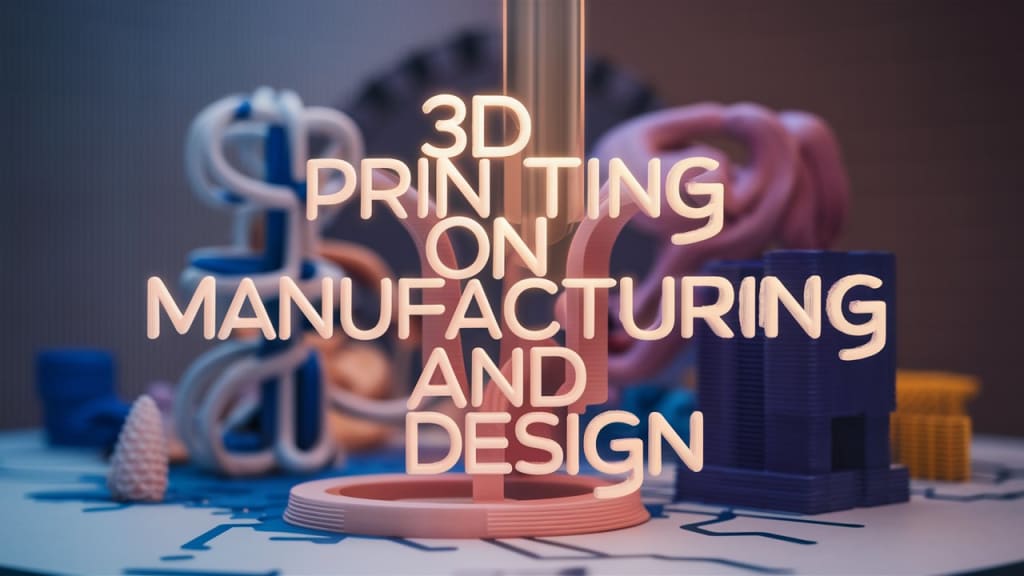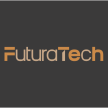The Impact of 3D Printing on Manufacturing and Design
How 3D Printing is Transforming Industries and Sparking Innovation

Introduction
In recent years, 3D printing has emerged as a revolutionary technology, reshaping manufacturing and design across various industries. This technology, also known as additive manufacturing, allows for the creation of three-dimensional objects by adding material layer by layer. From prototyping and production to medical applications and creative design, 3D printing is opening up new possibilities and transforming traditional processes. In this article, we will explore the profound impact of 3D printing on manufacturing and design, highlighting its benefits, applications, and future potential.
Click Here to Connect with Top Dropshipping Suppliers Worldwide!
Understanding 3D Printing
3D printing is a process that creates physical objects from digital designs. Unlike traditional manufacturing methods that often involve cutting or molding materials, 3D printing builds objects layer by layer using various materials such as plastics, metals, and ceramics.
How 3D Printing Works
Digital Design: The process begins with a digital model created using computer-aided design (CAD) software.
Slicing: The digital model is sliced into thin layers, which the printer will build one at a time.
Printing: The 3D printer deposits material layer by layer, following the sliced design, until the entire object is formed.
Post-Processing: Depending on the application, the printed object may undergo post-processing steps such as cleaning, polishing, or curing.
Types of 3D Printing Technologies
There are several types of 3D printing technologies, each with its unique advantages and applications:
Fused Deposition Modeling (FDM): The most common type of 3D printing, ideal for prototyping and small-scale production.
Stereolithography (SLA): Uses a laser to cure liquid resin into solid plastic, known for high accuracy and smooth finishes.
Selective Laser Sintering (SLS): Uses a laser to fuse powdered material, suitable for producing strong and complex parts.
Direct Metal Laser Sintering (DMLS): Similar to SLS but uses metal powders, widely used in aerospace and medical industries.
Impact on Manufacturing
3D printing is revolutionizing manufacturing by offering new ways to create products, streamline processes, and reduce costs.
Rapid Prototyping
One of the most significant impacts of 3D printing is its ability to rapidly prototype new designs. This allows designers and engineers to quickly create and test physical models, accelerating the product development cycle.
Benefits of Rapid Prototyping:
Speed: Prototypes can be produced in hours or days, rather than weeks or months.
Cost Efficiency: Reduces the need for expensive molds and tooling.
Iterative Design: Enables quick iteration and testing of multiple design variations.
Customization and Personalization
3D printing allows for mass customization, enabling manufacturers to produce unique products tailored to individual specifications without the need for costly retooling.
Examples of Customization:
Medical Devices: Custom prosthetics and implants tailored to fit individual patients.
Consumer Goods: Personalized jewelry, phone cases, and fashion accessories.
Automotive: Custom car parts and accessories designed for specific models or user preferences.
On-Demand Manufacturing
3D printing supports on-demand manufacturing, reducing the need for large inventories and minimizing waste. Companies can produce items as needed, leading to more efficient supply chains.
Advantages of On-Demand Manufacturing:
Reduced Inventory Costs: Less need for storage space and capital tied up in unsold products.
Flexibility: Ability to quickly adapt to changing market demands and trends.
Sustainability: Less material waste and lower environmental impact.
Tooling and Fixtures
In addition to end-use products, 3D printing is used to create custom tooling, jigs, and fixtures that streamline manufacturing processes and improve precision.
Applications in Tooling:
Injection Molding: 3D printed molds for small production runs.
Assembly Line: Custom jigs and fixtures that enhance assembly accuracy and speed.
Maintenance: Replacement parts for machinery and equipment.
Impact on Design
3D printing is empowering designers to push the boundaries of creativity and innovation, offering new possibilities for complex and intricate designs.
Complex Geometries
One of the most exciting aspects of 3D printing is its ability to produce complex geometries that would be impossible or impractical with traditional manufacturing methods.
Design Innovations:
Lightweight Structures: Complex lattice structures that reduce weight while maintaining strength.
Organic Shapes: Smooth, flowing designs inspired by nature.
Integrated Functions: Parts with built-in hinges, springs, or channels that require no assembly.
Material Variety
Advances in 3D printing materials are expanding the range of applications and allowing designers to choose from a variety of materials with different properties.
Click Here to Connect with Top Dropshipping Suppliers Worldwide!
Common 3D Printing Materials:
Plastics: ABS, PLA, and nylon for general-purpose applications.
Metals: Titanium, stainless steel, and aluminum for high-strength and heat-resistant parts.
Resins: Flexible, rigid, and castable resins for specialized uses.
Composites: Carbon fiber and fiberglass-reinforced materials for enhanced performance.
Sustainability in Design
3D printing supports sustainable design practices by reducing material waste, enabling the use of recycled materials, and promoting energy-efficient production processes.
Sustainable Design Practices:
Material Optimization: Using only the necessary amount of material for each part.
Recycled Materials: Developing 3D printing filaments made from recycled plastics.
Localized Production: Reducing transportation emissions by producing items closer to their point of use.
Collaboration and Innovation
3D printing fosters collaboration and innovation by enabling designers to quickly share and iterate on digital designs, regardless of their location.
Collaborative Design Platforms:
Cloud-Based CAD Software: Tools like Tinkercad and Fusion 360 allow for real-time collaboration on design projects.
Open Source Projects: Communities like Thingiverse where designers share and build upon each other's work.
Applications Across Industries
3D printing is making waves in various industries, each finding unique ways to leverage the technology's benefits.
Healthcare
The healthcare industry is a significant beneficiary of 3D printing, using the technology for custom medical devices, surgical guides, and even bioprinting tissues and organs.
Examples in Healthcare:
Prosthetics: Custom-fit prosthetic limbs tailored to individual patients.
Dental: 3D printed crowns, bridges, and orthodontic devices.
Surgical Planning: Anatomical models based on patient scans to guide complex surgeries.
Aerospace
In aerospace, 3D printing is used to create lightweight, high-strength components that reduce aircraft weight and improve fuel efficiency.
Examples in Aerospace:
Engine Parts: Complex fuel nozzles and brackets made from high-performance metals.
Unmanned Aerial Vehicles (UAVs): Custom parts for drones and other UAVs.
Space Exploration: Components for satellites and spacecraft.
Fashion and Jewelry
Designers in fashion and jewelry are using 3D printing to create intricate, custom pieces that were previously impossible to manufacture.
Examples in Fashion and Jewelry:
Custom Jewelry: Personalized rings, necklaces, and bracelets with intricate designs.
Fashion Accessories: Unique, avant-garde clothing and accessories.
Footwear: Custom-fit insoles and shoe designs.
Construction
3D printing is making its mark in construction, with innovations in building materials and techniques that promise to revolutionize the industry.
Examples in Construction:
3D Printed Homes: Entire homes built using large-scale 3D printers.
Building Components: Custom architectural elements and structural components.
Sustainable Materials: Use of recycled materials for eco-friendly construction.
Challenges and Future Prospects
While 3D printing offers numerous benefits, it also faces several challenges that need to be addressed for its full potential to be realized.
Challenges
Material Limitations: The range of available materials is still limited compared to traditional manufacturing.
Speed and Scalability: 3D printing can be slower and less scalable for large-scale production.
Quality Control: Ensuring consistent quality and strength across printed parts can be challenging.
Future Prospects
Despite these challenges, the future of 3D printing looks promising, with ongoing advancements in technology and materials.
Innovations on the Horizon:
New Materials: Development of advanced materials with enhanced properties, such as graphene and biocompatible polymers.
Faster Printing: Improvements in printing speed and efficiency, such as continuous liquid interface production (CLIP) and multi-material printing.
Integrated Systems: Combining 3D printing with other technologies, such as robotics and AI, to create fully automated manufacturing systems.
Click Here to Connect with Top Dropshipping Suppliers Worldwide!
Conclusion
3D printing is transforming the worlds of manufacturing and design, offering unprecedented opportunities for innovation, customization, and efficiency. From rapid prototyping and on-demand production to complex geometries and sustainable practices, this technology is reshaping industries and pushing the boundaries of what is possible. As we continue to explore the potential of 3D printing, it is essential to address the challenges and embrace the opportunities it presents. The future of manufacturing and design is bright, and with the continued evolution of 3D printing, we can look forward to a world of endless possibilities and creative solutions.
About the Creator
Enjoyed the story? Support the Creator.
Subscribe for free to receive all their stories in your feed. You could also pledge your support or give them a one-off tip, letting them know you appreciate their work.






Comments (1)
Glad to read this.